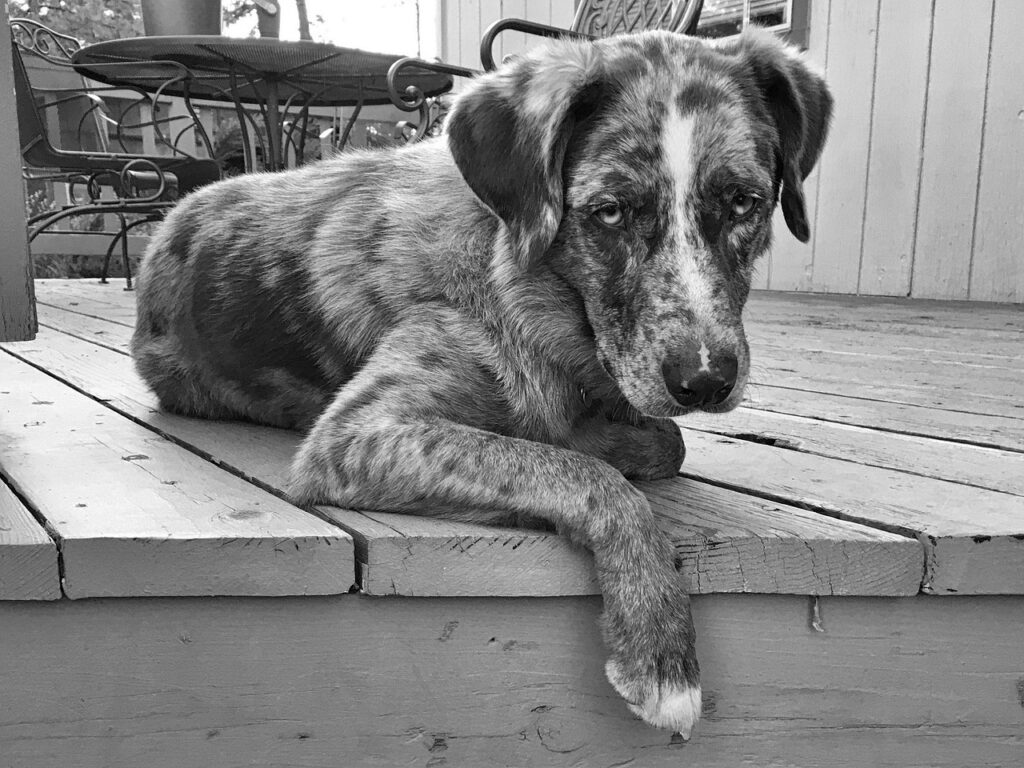“A dog is the only thing on earth that loves you more than he loves himself.” Isn’t it fascinating how this quote by Josh Billings holds a world of truth? Our four-legged friends offer us companionship, love, and loyalty.
However, what happens when our cheerful pals seem a tad bit off, or when the wag in their tails fades? Is it possible that our furry friends could be dealing with…depression?
Yes, you read it right. Depression in dogs is not just a figment of your imagination. It’s real, it’s significant, and it warrants our attention.
If you’re a dog lover, you know it is crucial to ensure that your pet is always in the best of spirits.
In this article, we will delve into the nitty-gritty of signs of depression in dogs and how to understand them better.
Table of Contents
Is it really dog depression, or are we barking up the wrong tree?
It’s easy to anthropomorphize our pets, attributing human characteristics, emotions, and intentions to their behaviors. But can dogs really get depressed?

While research in canine cognition is still young, we have begun to understand that dogs are emotional beings, much like us. They exhibit a range of emotions from joy and excitement to fear and, yes, even sadness. However, diagnosing a dog with depression can be challenging.
Let’s take a look at some of the signs of depression in dogs that could indicate your furry friend may be feeling blue:
- Changes in appetite: Is your dog eating less or showing less interest in treats?
- Sleep disturbances: Is your dog sleeping more or less than usual?
- Lack of interest in play or walks: Has your previously playful pet lost interest in their favorite activities?
- Increased isolation: Is your dog hiding or preferring to spend time alone?
- Unusual aggressive or anxious behavior: Is your pup behaving unusually aggressive or anxious?
It’s essential to remember, though, these symptoms could also indicate other health problems. So, what makes these signs indicative of depression, specifically? To answer that, we need to understand the potential causes of depression in dogs.
Potential Triggers for Dog Depression
Just like humans, dogs can experience emotional ups and downs due to various reasons. The most common triggers for dog depression include:
- Changes in the environment: Moving to a new place, addition or loss of a family member, or drastic changes in the daily routine can cause stress for a dog.
- Loss of a companion: Dogs are social creatures. The death or absence of a pet companion or a human family member can lead to depression.
- Health issues: Chronic pain or illnesses, such as arthritis or cancer, can affect a dog’s mental health.
Notice any parallels between human depression triggers and those of our dogs? That’s right, life stressors impact them too! But wait, isn’t identifying depression in dogs something only vets can do?
How To Spot Depression In Dogs: A Call for Vigilance
You’re not wrong if you think that vets are the primary individuals to diagnose depression in dogs. However, as a pet parent, you play an equally crucial role in this process. Why, you might ask? Simply because you know your pet the best.
You’re the one who shares an intimate bond with your pet, and who better than you to notice when something’s amiss?
Here’s a handy guide to help you monitor changes that may indicate depression in your pet:
- Observe their behavior: Keep an eye on their day-to-day activities, eating habits, and sleep patterns.
- Monitor their physical health: Regular check-ups can help identify any underlying health conditions that could be causing depression.
- Watch for changes in social behavior: A dog showing signs of withdrawal or aggression may be stressed or depressed.
Remember, knowledge is power. Understanding these symptoms and being vigilant about changes in your dog’s behavior can make all the difference in ensuring their happiness and wellbeing.
What Can Be Done: Unleashing The Road to Recovery
Having read this far, you’re likely pondering, “Okay, I get it, dogs can get depressed. But what can I do about it?”
Well, here’s the thing. Depression in dogs is not a death sentence. It can be managed and, in many cases, even reversed. Here are some steps you can take:
- Consult a vet: If you notice any changes in your dog’s behavior, consult your vet immediately. They may recommend tests to rule out physical ailments or refer you to a dog behaviorist.
- Provide comfort and companionship: Spend quality time with your dog, engage them in their favorite activities, and reassure them of your presence.
- Consider a healthy diet and regular exercise: A nutritious diet and physical activity can significantly boost a dog’s mood.
- Medication and professional help: In severe cases, your vet might suggest medication or behavioral therapy to help manage the condition.
But remember, Rome wasn’t built in a day. And your pet may not bounce back immediately either. Patience is the key.
Key Takeaways
Dog depression is a significant issue that warrants our attention. As dog lovers, we must understand that:
- Dogs, like humans, can suffer from depression.
- Changes in appetite, sleep disturbances, reduced interest in play, isolation, and unusual behavior can be indicative of depression.
- Environmental changes, loss of a companion, and health issues are common triggers.
- Being observant and vigilant is critical in identifying depression in dogs.
- Consulting a vet, providing comfort, ensuring a healthy lifestyle, and considering medication or therapy are potential steps towards recovery.
Wrapping Up
Life is better with dogs – full of wagging tails, playful barks, and comforting cuddles. So, let’s pay attention to our faithful companions and ensure they are as happy and healthy as they deserve to be.
After all, as Charles M. Schulz said, “Happiness is a warm puppy.” But we also need to remember that happiness is a healthy and joyful puppy!
Are we doing enough to understand and address dog depression? What are your thoughts, fellow dog lovers?


Dennis and Becca, have always shared a passion for man’s best friend. As dog enthusiasts, they put together articles that inform, engage, and captivate fellow dog lovers.